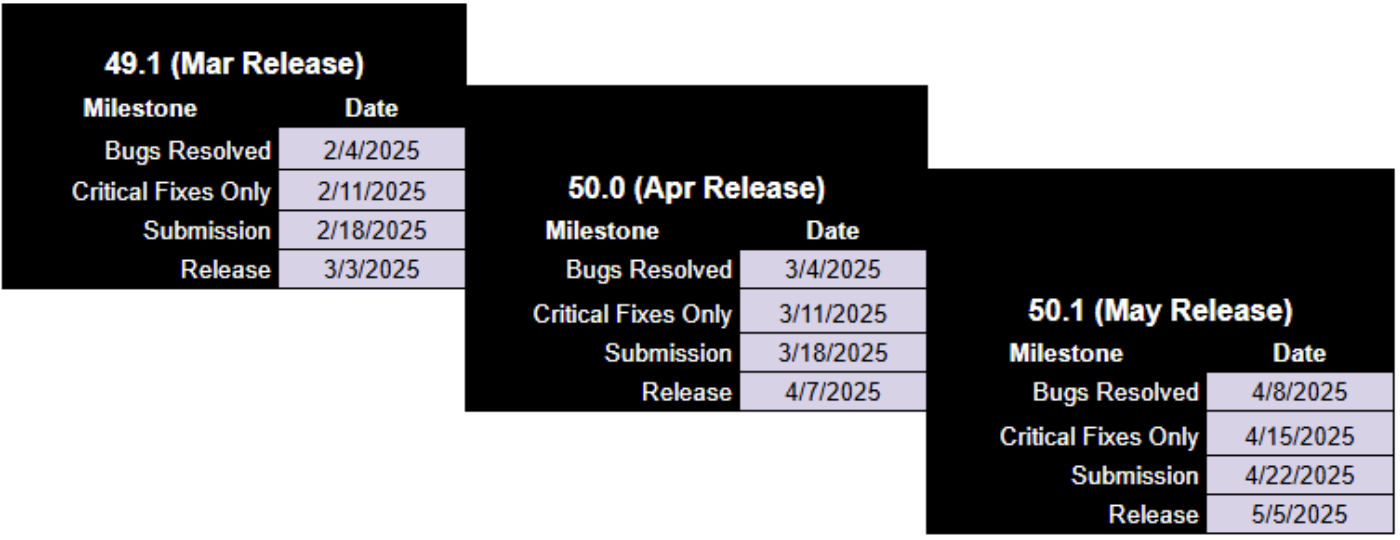Latest Dev Diary by
@KabamDORK https://forums.playcontestofchampions.com/en/discussion/392508/dev-diary-mcoc-release-process-and-bug-fixes#latestI’ll start regarding timing around Submission to Apple/Google.
Says could be up to a few days for Submission to be approved.
So since your example timeframes (2nd pic) seem to indicate you SUBMIT somewhere between 2-3 weeks before RELEASE (were those actually valid examples, that far in advance of Live ?)
Then I gather that is a 2-Step Release process then.
SUBMISSION to Apple/Google, but then you have to manually follow up and do the LIVE RELEASE later on, on the intended day. (as opposed to Apple/Google automatically releasing it as soon as they approve it, which I could imagine would play even more havok with event timings if Apple/Google released it much earlier on their own)
Is that right ? (which would show that releases, even the HotFixes you mention, are no quick process)

